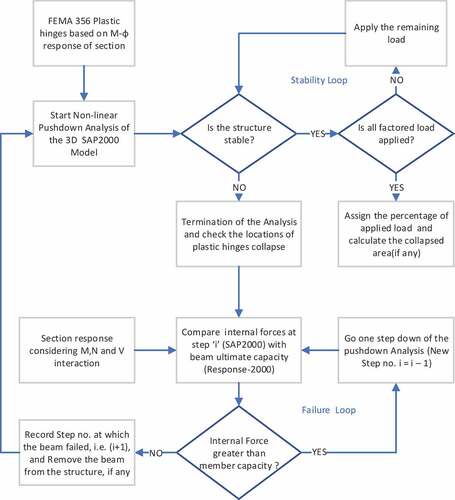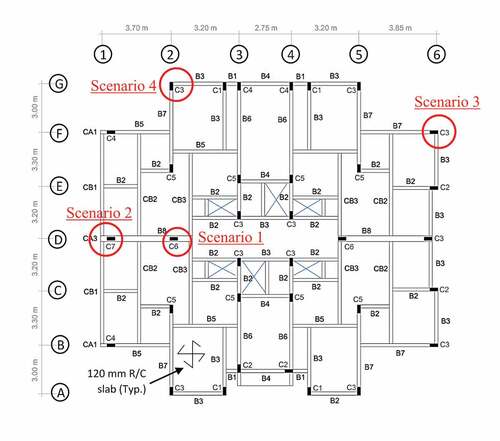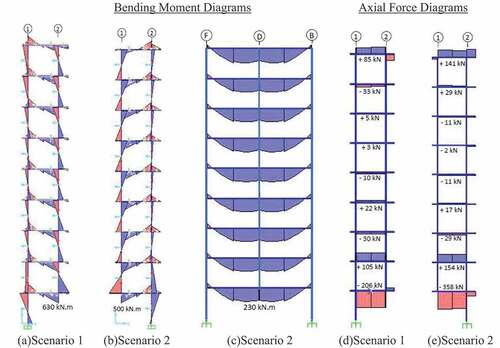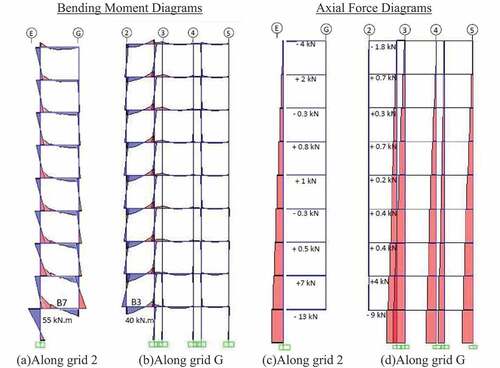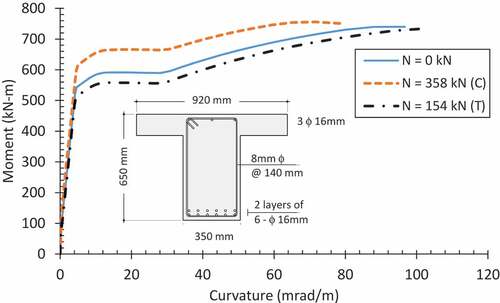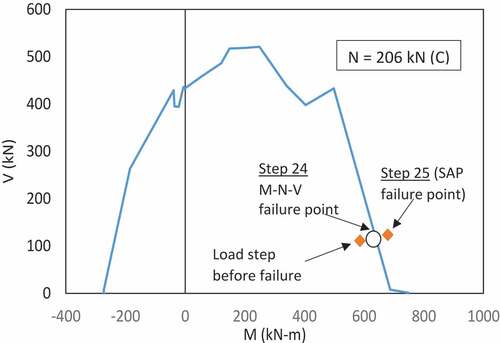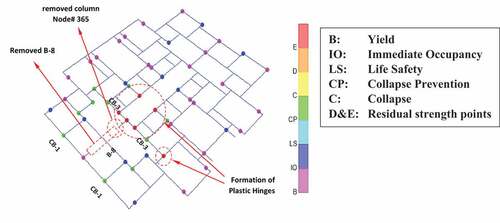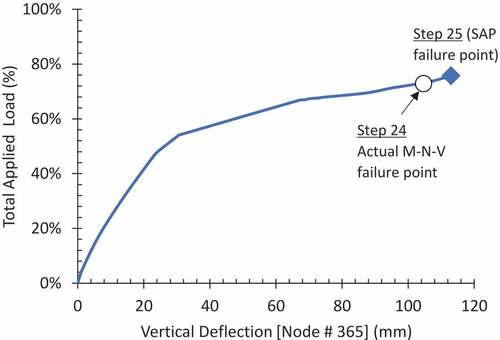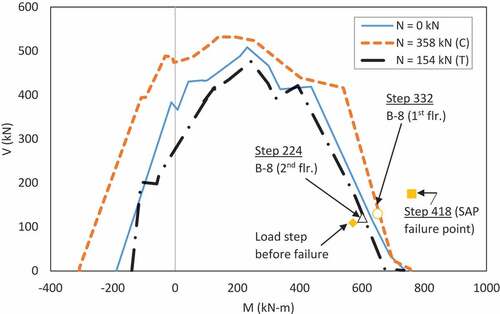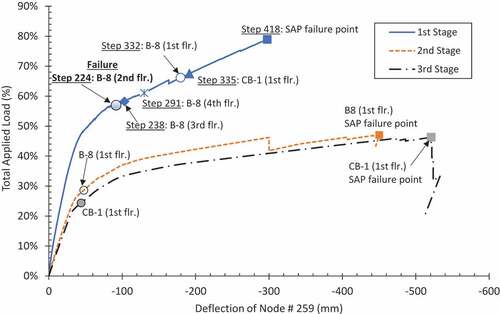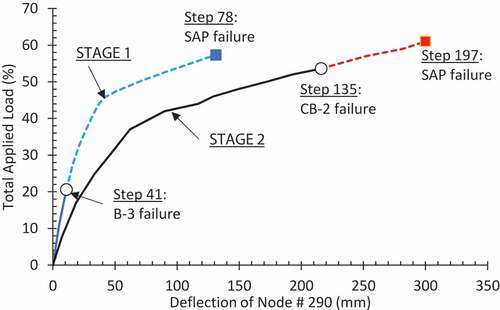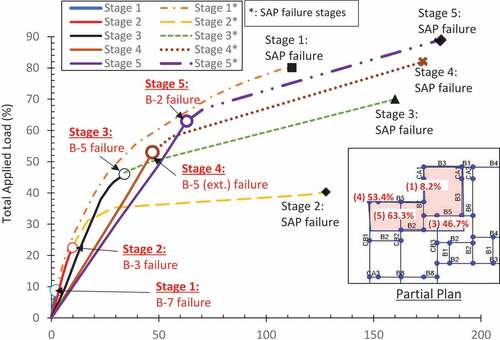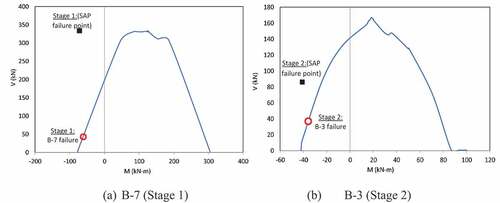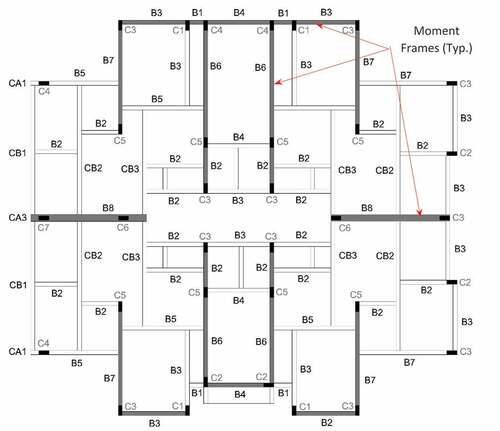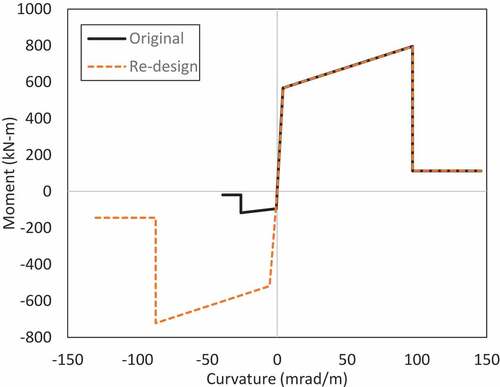Figures & data
Figure 3. (a) Various SAP2000 models compared to experimental study of Yi et al. (Citation2008), (b) M-N-V interaction diagram for beam cross-section.
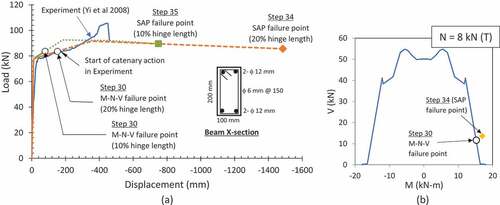
Figure 15. M-V interaction diagrams and tracing of failure point in beams B-3 and CB-2 for scenario 3
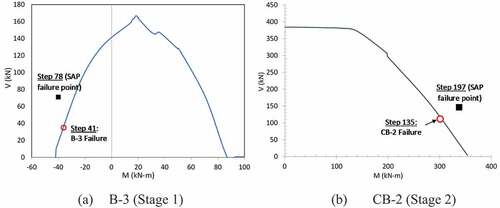
Table 1. Reinforcement details before and after providing rigid frames
Table 2. Progressive collapse performance of original and re-designed structure
Table 3. Effect of M-N-V interaction in plastic hinges on collapse load
Table A1. Column sizes (in cm) and reinforcement details
Table A2. Dimensions and reinforcement details in simply supported beams
Table A3. Dimensions and reinforcement details in continuous beams


